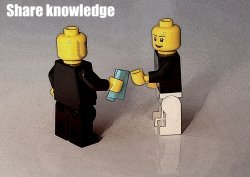How Networks Aid Creativity
How Networks Aid Creativity One of the inspirations for my PhD research was seeing how certain colleagues were able to have their creative ideas heard and used while other co-workers seemed to struggle. I found that even though I worked with a lot of intelligent people, only some really succeeded. It was my curiosity around the point that led me to my initial doctoral research agenda and led me complete





